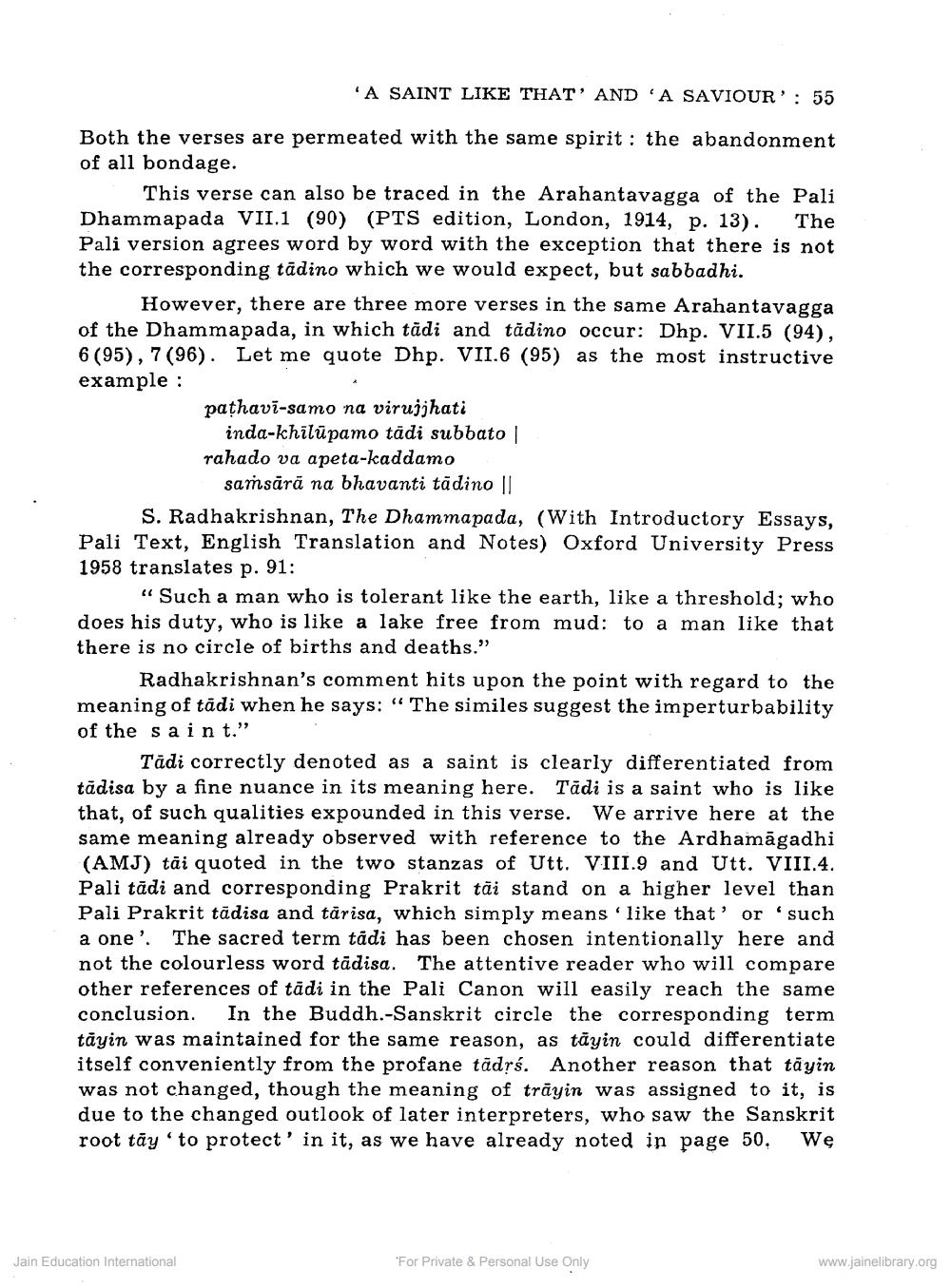________________
'A SAINT LIKE THAT' AND 'A SAVIOUR: 55 Both the verses are permeated with the same spirit: the abandonment of all bondage.
This verse can also be traced in the Arahantavagga of the Pali Dhammapada VII.1 (90) (PTS edition, London, 1914, p. 13). The Pali version agrees word by word with the exception that there is not the corresponding tadino which we would expect, but sabbadhi.
However, there are three more verses in the same Arahantavagga of the Dhammapada, in which tadi and tãdino occur: Dhp. VII.5 (94), 6 (95), 7(96). Let me quote Dhp. VII.6 (95) as the most instructive example :
pathavi-samo na virujjhati inda-khilupamo tädi subbato |
rahado va apeta-kaddamo
samsără na bhavanti tädino ||
S. Radhakrishnan, The Dhammapada, (With Introductory Essays, Pali Text, English Translation and Notes) Oxford University Press 1958 translates p. 91:
"Such a man who is tolerant like the earth, like a threshold; who does his duty, who is like a lake free from mud: to a man like that there is no circle of births and deaths."
Radhakrishnan's comment hits upon the point with regard to the meaning of tädi when he says: "The similes suggest the imperturbability of the saint."
Tadi correctly denoted as a saint is clearly differentiated from tädisa by a fine nuance in its meaning here. Tādi is a saint who is like that, of such qualities expounded in this verse. We arrive here at the same meaning already observed with reference to the Ardhamāgadhi (AMJ) tai quoted in the two stanzas of Utt. VIII.9 and Utt. VIII.4. Pali tadi and corresponding Prakrit tai stand on a higher level than Pali Prakrit tādisa and tärisa, which simply means 'like that' or 'such a one'. The sacred term tadi has been chosen intentionally here and not the colourless word tädisa. The attentive reader who will compare other references of tädi in the Pali Canon will easily reach the same. conclusion. In the Buddh.-Sanskrit circle the corresponding term tayin was maintained for the same reason, as tayin could differentiate itself conveniently from the profane tädṛś. Another reason that tayin was not changed, though the meaning of trayin was assigned to it, is due to the changed outlook of later interpreters, who saw the Sanskrit root tay to protect' in it, as we have already noted in page 50.
We
Jain Education International
For Private & Personal Use Only
www.jainelibrary.org




